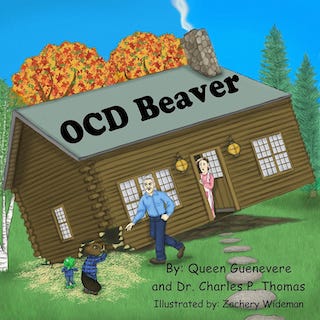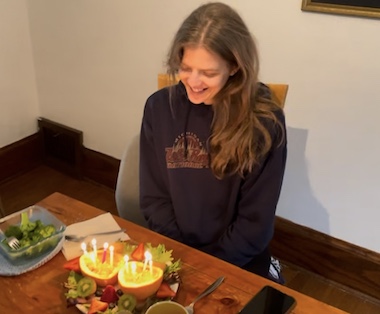Note: this blog is a continuation of my last blog: Overcoming OCD…how it all began.
My last blog featured Rohan* who had a debilitating nighttime fear of someone breaking into his house and taking him away. Rohan had been unable to sleep in his own room for the past five years, and he had developed a collection of nighttime rituals to try to manage his fears.
I’m picking up his story about six months into our weekly sessions. Rohan had finished almost all of the adventures in the Mindfulness and Self-Compassion Workbooks for Kids, and he had developed a foundation in resilience habits. At this point, I invited him to be curious about his nighttime fears and rituals and their possible connection with Obsessive Compulsive Disorder.
Because I am familiar with Obsessive Compulsive Disorder (it runs in my family), I recognized that Rohan’s obsessions had similarities with those of children who experience OCD.
I have a wonderful book on my shelves entitled, The OCD Beaver (written by mom), which I read to Rohan and his mother. Rohan immediately identified with the character that had OCD. He discovered that his obsessions had a label, and he realized that he was not the only person who suffered from obsessive thoughts. I love how a good children’s book can help kids to experience this.

After reading the OCD Beaver, I had a couple of sessions with Rohan during which he shared the details of his nighttime experience. I took detailed notes about his feelings, obsessions, and nighttime rituals, which I emailed with his permission to his school guidance counselor.
Not only did we get curious about his nighttime rituals, but we also talked about nighttime habits that could help him positively cope with his anxieties. We also discussed facts and fiction about robbers and kidnappers. Even though Rohan had had previous conversations with his parents about his fears, he was now able to view his fears with more mindful awareness, less judgment, and more clarity about the nature of obsessions. He was learning to label his nighttime worries as “obsessions,” and differentiate obsessions from regular thoughts.
Rohan and I continued to meet for the next month as we finished up the second of the two self-compassion workbooks, including some lessons on strong self-compassion and being your own “inner teammate.” Each session we talked about how things were going at school, with friends, and also how his nighttime obsessions and compulsions were progressing.
The following week, Rohan’s mom texted me that Rohan had slept in his bedroom alone for the first time in five years. And he did it again the next night, and the next, and the next. When Rohan came to see me for his weekly session, we celebrated and talked about what had changed. Rohan’s school guidance counselor had not yet responded to the email I had sent with Rohan’s symptoms, so the change had been something inside of Rohan. Here’s what Rohan reported in his own words:
I used to say, ‘I feel like we’re going to get robbed, and it’s probably real. If I believe it too long, it will probably happen.’
Now, I say, ‘I already experienced this for years. I’m going to keep you [the thought] and tell you that it won’t happen.’ When I feel afraid I say, ‘It’s not going to happen. It’s just my OCD thought. OCD is not always right.’
Rohan had learned to label his obsessive thoughts and remind himself of reality. He wasn’t resisting his obsessions, but rather he was talking back to his thoughts assertively. Rohan stopped almost all of his nighttime rituals, and Rohan’s mom bought him a new bedroom set to celebrate.
Around the same time, Rohan began to experience less anxiety and stress at school. When Rohan and his mom gave me permission to write about his story, I asked Rohan if he had any words that he wanted to share with others. This is what he said:
Even though some people think it’s impossible to beat OCD, some little changes can help make a big change.
-Rohan, age 10
I feel grateful that I was able to help Rohan develop resilience tools that empowered him to respond differently to his nighttime obsessions and compulsions. Rohan’s story can remind us all of the power of helping kids develop resilience habits early in life.
Reminder: You can join me for an upcoming orientation session or class to help kids grow resilience-boosting self-compassion. More information here.
Remember, it’s never too late or too early to help a child (or grown-up) grow resilience.
Wishing you the gift of resilience,
Jamie Lynn
Note: *Rohan’s name and some other identifying details have been changed to protect his privacy, but the details of his fears and recovery are true.
P.S. I celebrated my birthday last week Friday. Here’s a picture of the “cake” that my daughters made for me :))

